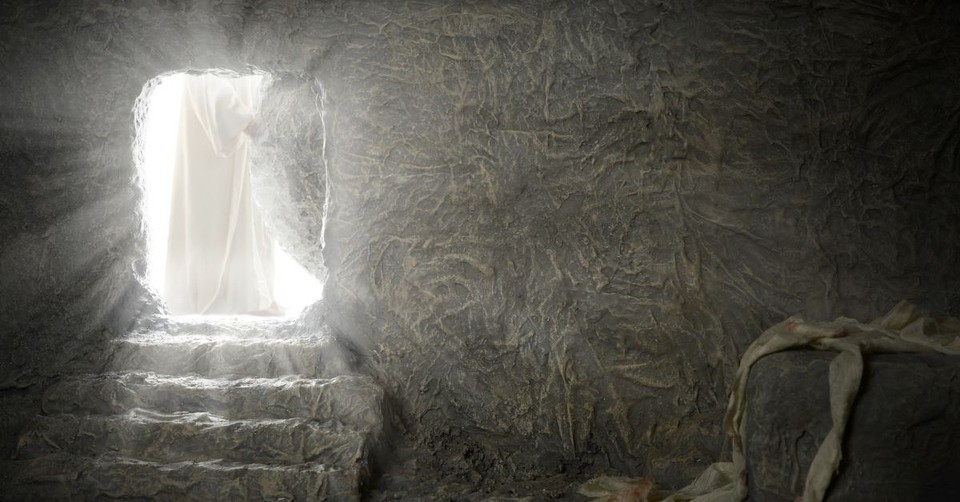What Should Christians Know about the Triduum and Its Significance to Easter?

If you’re a Baptist, like me, then it's likely you have not heard of Triduum. Triduum comes from a Latin word meaning “three” and it relates to the time spent by Jesus in the tomb. It is considered by Roman Catholics, as well as more liturgical Protestant denominations, to be the most sacred part of the liturgical year. What exactly is the meaning of triduum and how does it relate to Easter?
What Does Triduum Mean?
The technical definition of triduum, given by Merriam-Webster, is “a period of three days of prayer usually preceding a Roman Catholic feast.” In this particular instance, the Easter Triduum includes three 24-hour periods which encompasses the prominent feasts of Easter celebration: Maundy Thursday, Good Friday, Holy Saturday, Easter Sunday.
Believers in Jesus have been commemorating the Resurrection since its occurrence. There are also records from the second century where the Church began fasting on Friday and Saturday and then celebrating Passover on Resurrection Sunday. By the 4th century, the first known liturgical celebrations were held by Christians in Jerusalem. In 1955 reform was made by Pope Pius XII and the Triduum became a more clearly defined and distinguishable liturgical period.
The Roman Catholic Diocese of Honolulu summarizes the Triduum this way:
The Triduum is the highest point of the entire liturgical year. It is a three-part liturgy that extends over three days and celebrates and makes present the paschal mystery of Christ: his passion, death, and resurrection. It begins with the evening Mass of the Lord’s Supper on Holy Thursday, reaches its high point in the Easter Vigil, and closes with Evening Prayer on Easter Sunday.
What Happens During the Triduum?
Triduum begins on Holy Thursday with an evening mass. This is often referred to as The Mass of the Lord’s Supper. Here the institution of the Lord’s Supper is relived. In some churches, a foot-washing ceremony follows, where the priest washes the feet of others. This is also a unique Mass because the bishop or priest does not conclude with the usual blessing. “Instead, the faithful are invited to stay and worship our Lord in the Eucharist during Adoration of the Blessed Sacrament, which lasts into the night.”
The blessing is not offered until the end of the Triduum—which unifies each of these into one liturgical event. One other thing of note is that on Maundy Thursday local bishops celebrate Mass together to honor the institution of the priesthood. And it is here that the bishop blesses all of the holy oil (used for baptism, confirmation, anointing of the sick) for the next year.
Good Friday is the day in which the passion of Christ is commemorated. On this day the Catholic Church does not celebrate mass. It is the only day of the year which this is the case. Fasting is encouraged on this solemn day and believers are also encouraged to meditate on the sacrifice of Christ from 12-3pm (the hours which Jesus was hanging upon the cross).
A Good Friday service is marked by a few important rituals. First is the liturgy of the word. The priest will often enter the sanctuary and lie prostrate as an act of humility and as a sign of grief. Here the passion narrative is typically read from the gospel of John and then the faithful enter into solemn intercession. There are ten specific areas where prayer is directed: for Holy Church, for the Pope, for all orders and degrees of the faithful, for catechumens, for the unity of Christians, for the Jewish people, for those who do not believe in Christ, for those who do not believe in God, for those who are in public office, and finally for those in tribulation.
One of the most important of these rituals is the Veneration of the Cross. During this event the faithful show reverence and respect for the Cross in varying ways. Some will kneel, others will kiss the cross or touch it in some other fashion. This is a solemn occasion, and it is visibly represented throughout the church building. Gretchen Filz explains it well:
The parish altar looks very different on Good Friday: it is plain and bare. There is no consecrated Host in the tabernacle at the main altar of the church; it was carried away on Holy Thursday night to the "altar of repose" to signify Jesus' death. The candle by the tabernacle is blown out, and the tabernacle doors are left open to show that it is empty. Jesus is gone. This is quite dramatic, reminding us that Good Friday is a solemn day of mourning and prayer.
A Good Friday service typically concludes with observing holy communion (not technically a Mass because the elements are those which were consecrated and received from the Holy Thursday service).
There is no afternoon mass on Holy Saturday. It is a picture of Christ being in the tomb. But once the sun goes down the Easter Vigil is observed (sometime after nightfall and before daybreak). It begins and ends in darkness. There are four parts to this vigil: the service of light, the liturgy of the word, the liturgy of baptism, and the liturgy of the Eucharist. Julianne Wallace explains it well:
The Easter Vigil includes the lighting of the Easter Fire and Paschal Candle (the large candle that we will use throughout the year), the singing of the Exsultet (the Easter Proclamation), the expanded Liturgy of the Word that traces time through Salvation History (the story of our Salvation), the Liturgy of Initiation (where new people come into the Church), and the celebration of the Holy Eucharist. All these rituals come together for one purpose: to remember and recall the saving deeds of our God on our behalf. Here’s an explanation of two moments from the celebration.
It is also during this time that catechumens (those who have been waiting for full entrance into the Catholic Church) will receive baptism and confirmation and be fully received into the church.
Every element during the Easter Triduum is intended to commemorate the death, burial, and resurrection of Jesus Christ. The Easter Vigil is not the culmination of the Easter season it is the beginning of 50 days of celebrating that Christ is alive.
Why Is the Easter Triduum Important?
A few years ago, bones were discovered that some thought might have belonged to the historical Jesus. A more liberal theologian remarked that it would not impact his faith at all if it was found that these bones did in fact belong to Jesus of Nazareth. It’s possible that this man’s faith would not be impacted, but it is not true that the Christian faith would not be impacted. If the resurrection is not true, then the whole thing is a sham. The death, burial, and resurrection of Jesus Christ is the heart of the Christian gospel. 1 Corinthians 15:3-4 tells us that this is of first importance.
The Easter Triduum is important because it commemorates the heart of the good news of Jesus. Certainly, the actual event of the death, burial, and resurrection of Christ is the most important aspect of our faith. It is not our rituals or celebrations of the event which are ultimately saving—it is the work of Christ himself. But there are ways in which it is these acts of faith that connect us to the work of Christ.
As one with Baptist convictions, I would likely not sign off on every element of the Easter Triduum as celebrated by a Roman Catholic. However, I deeply appreciate the intentional focus on remembering the events surrounding Holy Week. I think it is helpful emotionally to connect the pain of Good Friday with the triumph of Easter Sunday. I appreciate the participatory nature of the Triduum—I think those of us from less liturgical traditions are missing out on this particular form of beauty. We would likely not include all of the elements in a traditional Roman Catholic Triduum, but I think we could benefit greatly from practicing something similar.
Conclusion
There is much darkness in our world. The Easter season reminds us of these moments of darkness. It brings us close to the pain which engulfed the passion. But it also proclaims to us that light is greater than darkness. The Resurrection reminds us that darkness never has the last word in the story. Hope springs out of the ashes. It is good for us to be reminded of this through intentional observances. The Easter Triduum is one path of remembrance.
Ultimately our hope is in Christ, it is not in the symbols or the rituals. He has risen. This changes everything.
Photo Credit: ©GettyImages/ginosphotos
Mike Leake is husband to Nikki and father to Isaiah and Hannah. He is also the lead pastor at Calvary of Neosho, MO. Mike is the author of Torn to Heal and Jesus Is All You Need. His writing home is https://mikeleake.net and you can connect with him on Twitter @mikeleake. Mike has a new writing project at Proverbs4Today.
This article is part of our larger Holy Week and Easter resource library centered around the events leading up to the death and resurrection of Jesus Christ. We hope these articles help you understand the meaning and story behind important Christian holidays and dates and encourage you as you take time to reflect on all that God has done for us through his son Jesus Christ!
What is Lent? It's Meaning and Why We Celebrate
When is Lent? When Does Lent Start and End?
What is the Meaning Ash Wednesday?
What is Holy Week?
What Is the Meaning of Palm Sunday?
What is the Meaning of Holy Monday?
What is Maundy Thursday?
What Is Good Friday and Why is it Good?
Good Friday Prayer
What Does Holy Saturday Mean?
What Is the Easter?
Easter Prayers
Powerful Facts About the Cross of Jesus
Originally published March 08, 2022.







